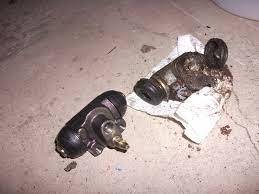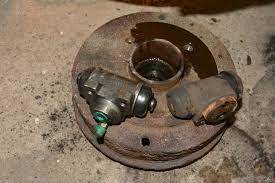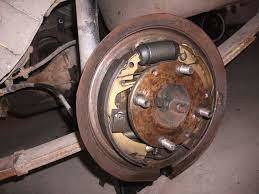09
2025
-
05
Understanding the Brake Master Cylinder: A Deep Dive into Vehicle Safety
Explore the vital role of the brake master cylinder in vehicle safety and performance. Discover its functions, importance, and maintenance tips.
The Heart of Vehicle Stopping Power
When it comes to driving, one of the most crucial components that keep you safe is the brake master cylinder. This unsung hero, often overlooked, plays a pivotal role in ensuring that your vehicle stops when you hit the pedal. So, let’s dive into what makes this part so essential
!
What is a Brake Master Cylinder?
In layman's terms, the brake master cylinder is a hydraulic pump that converts the force you apply on the brake pedal into hydraulic pressure. This pressure is what activates your brakes, allowing your vehicle to come to a screeching halt (or a smooth stop, depending on your driving style!).
How Does it Work?
Now, let’s break it down: when you press the brake pedal, a piston within the master cylinder moves, pushing brake fluid through the brake lines to the brake calipers or drums. This fluid acts like a messenger, transmitting your intent to stop, and voilà! Your vehicle slows down. It’s a bit like magic, but trust me, it’s all science!
Components of the Brake Master Cylinder
- Piston: This is the heart of the master cylinder that creates hydraulic pressure.
- Reservoir: This is where the brake fluid is stored before it’s sent into action.
- Brake Fluid: A special fluid that transfers force and lubricates the system.
Why is it Important?
Imagine driving down the highway, and your brakes suddenly fail. Yikes! The master cylinder ensures that this nightmare scenario doesn’t happen by maintaining the proper level of hydraulic pressure. If it’s malfunctioning, you could face brake failure, which could lead to accidents. So, keeping this component in tip-top shape is vital for your safety.
Signs of a Failing Brake Master Cylinder
So, how do you know if your brake master cylinder is on the fritz? Watch for these telltale signs:
- Poor Brake Response: If your brakes feel spongy or less responsive, it might be time for a check-up.
- Leaking Brake Fluid: Notice any puddles under your car? That could be brake fluid, indicating a potential problem.
- Warning Light: Your dashboard may have a brake warning light that lets you know something’s amiss.

Maintenance Tips
Keeping your brake master cylinder healthy doesn’t require a PhD in mechanics! Just follow these simple tips:
- Regular Inspections: Have your brakes checked at least once a year.
- Fluid Replacement: Change your brake fluid every couple of years to prevent moisture buildup.
- Watch for Warning Signs: Stay alert for any changes in your braking performance.
Final Thoughts
In conclusion, the brake master cylinder is a critical component of your vehicle's braking system. Understanding its function and maintaining it properly can mean the difference between a safe ride and a dangerous one. So, the next time you hop in your car, give a nod to this unsung hero that keeps you safe on the road!




